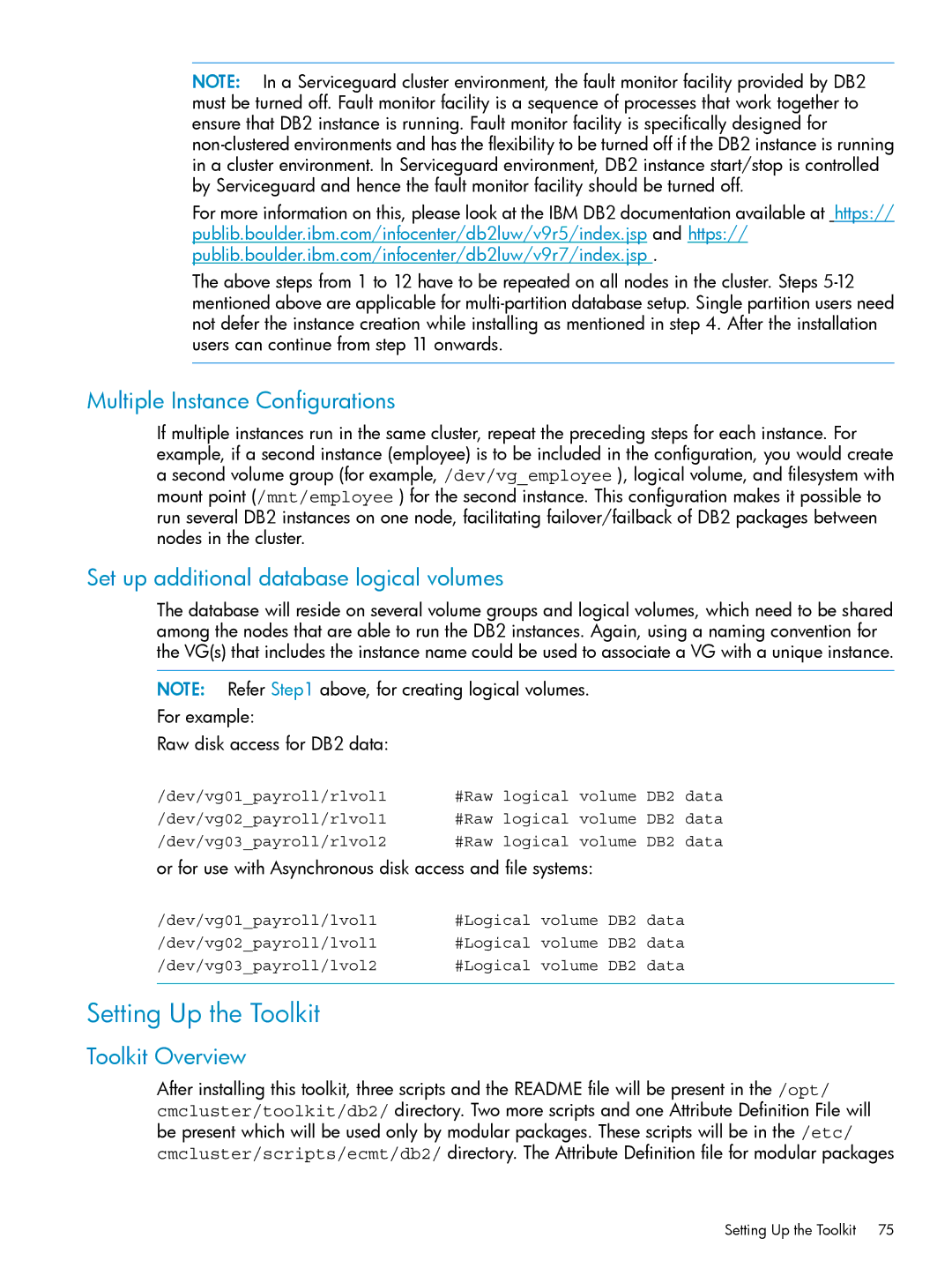
NOTE: In a Serviceguard cluster environment, the fault monitor facility provided by DB2 must be turned off. Fault monitor facility is a sequence of processes that work together to ensure that DB2 instance is running. Fault monitor facility is specifically designed for
For more information on this, please look at the IBM DB2 documentation available at https:// publib.boulder.ibm.com/infocenter/db2luw/v9r5/index.jsp and https:// publib.boulder.ibm.com/infocenter/db2luw/v9r7/index.jsp .
The above steps from 1 to 12 have to be repeated on all nodes in the cluster. Steps
Multiple Instance Configurations
If multiple instances run in the same cluster, repeat the preceding steps for each instance. For example, if a second instance (employee) is to be included in the configuration, you would create a second volume group (for example, /dev/vg_employee ), logical volume, and filesystem with mount point (/mnt/employee ) for the second instance. This configuration makes it possible to run several DB2 instances on one node, facilitating failover/failback of DB2 packages between nodes in the cluster.
Set up additional database logical volumes
The database will reside on several volume groups and logical volumes, which need to be shared among the nodes that are able to run the DB2 instances. Again, using a naming convention for the VG(s) that includes the instance name could be used to associate a VG with a unique instance.
NOTE: Refer Step1 above, for creating logical volumes.
For example:
Raw disk access for DB2 data:
/dev/vg01_payroll/rlvol1 /dev/vg02_payroll/rlvol1 /dev/vg03_payroll/rlvol2
#Raw logical volume DB2 data #Raw logical volume DB2 data #Raw logical volume DB2 data
or for use with Asynchronous disk access and file systems:
/dev/vg01_payroll/lvol1 /dev/vg02_payroll/lvol1 /dev/vg03_payroll/lvol2
#Logical volume DB2 data #Logical volume DB2 data #Logical volume DB2 data
Setting Up the Toolkit
Toolkit Overview
After installing this toolkit, three scripts and the README file will be present in the /opt/ cmcluster/toolkit/db2/ directory. Two more scripts and one Attribute Definition File will be present which will be used only by modular packages. These scripts will be in the /etc/ cmcluster/scripts/ecmt/db2/ directory. The Attribute Definition file for modular packages
Setting Up the Toolkit 75
